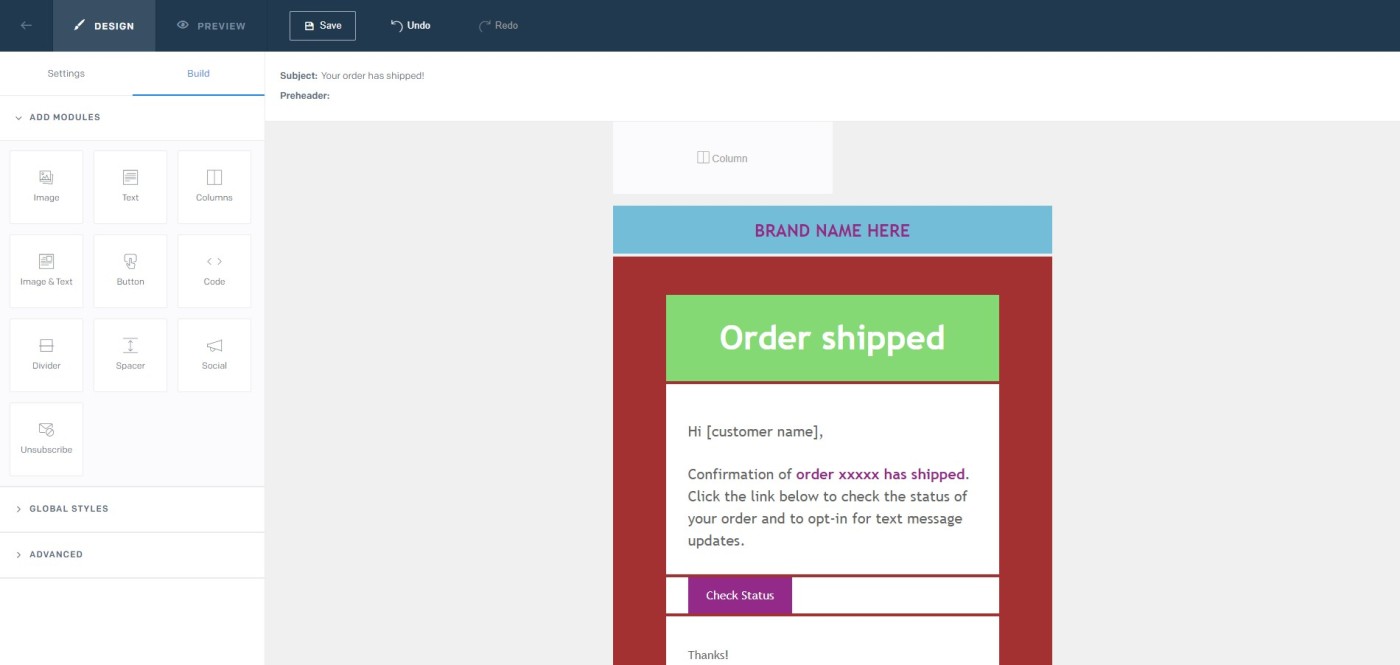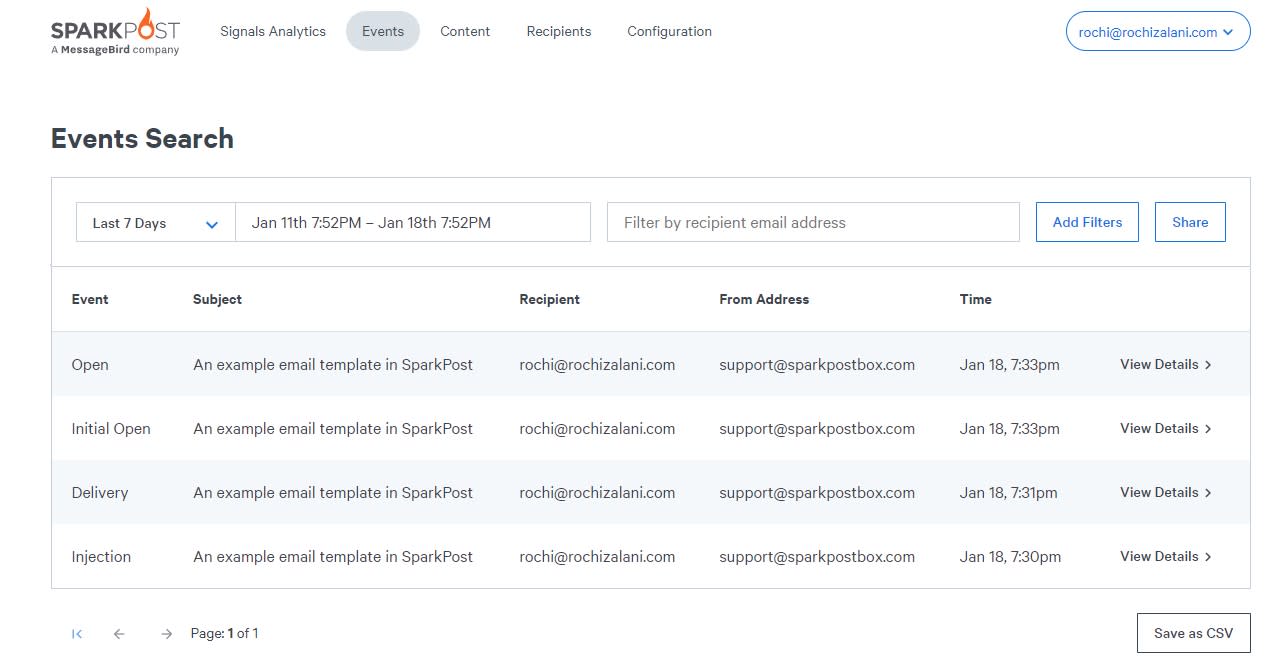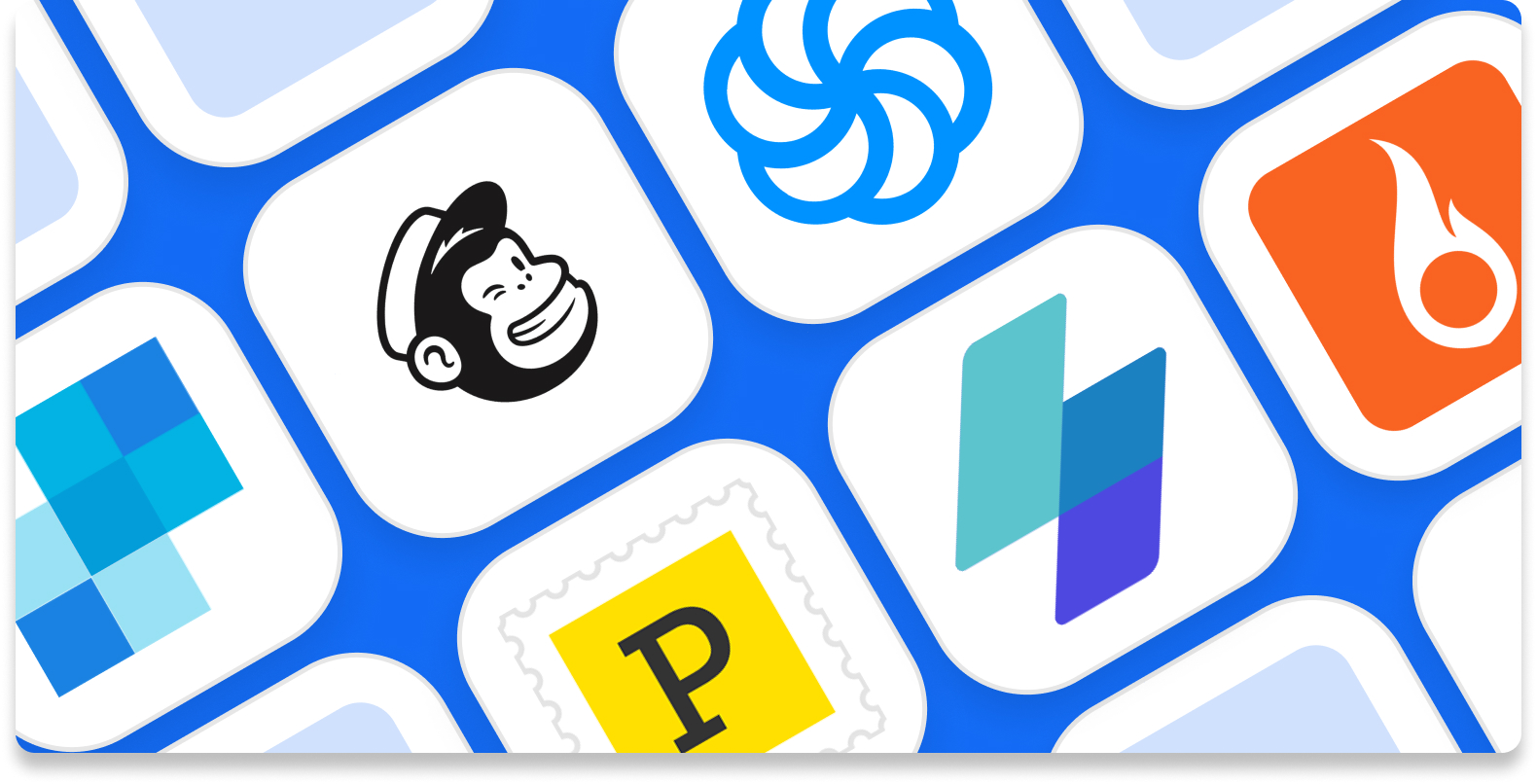Transactional emails are an untapped opportunity—they’re often one of the first emails a customer or subscriber receives from you, and they have incredibly high open rates. Way higher than marketing emails.
An order confirmation, a welcome email, a dispatch update, and even a new device login—they’re all opportunities to build and strengthen customer relationships.
I’ve been researching, testing, and writing about email marketing software for the last three years. And I know the decision to choose an email tool can be time-consuming. So I spent several weeks researching and testing over two dozen transactional email apps—here are the six best.
The 6 best transactional email services
What makes a great transactional email service?
How we evaluate and test apps
All of our best apps roundups are written by humans who’ve spent much of their careers using, testing, and writing about software. We spend dozens of hours researching and testing apps, using each app as it’s intended to be used and evaluating it against the criteria we set for the category. We’re never paid for placement in our articles from any app or for links to any site—we value the trust readers put in us to offer authentic evaluations of the categories and apps we review. For more details on our process, read the full rundown of how we select apps to feature on the Zapier blog.
Picking a tool to send transactional emails is tricky—there are tons of options offering similar services and competitive pricing. I started by figuring out what the essential features were for apps in this category. Here’s what I looked for during my initial evaluation of transactional email providers:
-
Value for money. Transactional email tools are a heavy investment. It’s essential to get a feel of the app before purchasing, so the best transactional email apps aren’t just competitively priced but also include a free trial to test out the features without a financial commitment.
-
Ease of setting up. There’s nothing more frustrating than signing up for a transactional email app, making an account, and then not being able to figure out how to configure your domain. Your team—developers or not—should be able to easily log in to the app and set it up for action.
-
Customer support. Even the experts need help sometimes. Success with a transactional email app means getting quick and reliable support—whether that’s in the form of live chat, email, or phone. The best tools also have an extensive and updated knowledge base so you can help yourself when possible.
-
Analytics. While the need for data differs from business to business, comprehensive numbers hurt no one. The best transactional email apps check the basic boxes of analyzing your open rate, bounce rate, spam complaints, and also go beyond that, to share delivery insights that can improve your emails.
-
Deliverability. There’s nothing worse than a customer receiving their dispatch status email in spam, or worse, not receiving any update at all. The ideal transactional email app has excellent deliverability—ensuring you land in your customers’ inboxes on time.
To find the best options, I signed up for free trials of all the apps that met my criteria and tested them. I added contacts, drafted an email, and sent two or three test emails for each app—unless their domain verification process made it impossible to move ahead with testing. Along the way, I took notes on everything I encountered—what I liked and what I didn’t like.
I also read user reviews to better understand how the various features held up over a period of several months or years, versus just a few weeks. For example, I checked to see if there was overwhelmingly negative feedback about deliverability or bounced emails when the volume of email increases as a business scales. Once I’d narrowed down the list, I tested the shortlist again, even more in-depth, to be sure each service lived up to its unique selling point. And that’s how I landed on these six apps.
Best transactional email service for transactional emails and email marketing in one
SendGrid

If you want to manage your transactional emails and marketing emails under one roof, SendGrid is the way to go. Transactional emails are at the core of SendGrid’s business, so it’s no surprise it’s a killer in this domain. And it stacks up really nicely against some other big names.
For example: SendGrid outshines Mailchimp with its intuitive email editor as well as its comprehensive analytics. SendGrid offers an expert insights report, deliverability metrics, category comparisons, and more. And because SendGrid is a transactional email app first and foremost, it has all the features—whereas the standard Mailchimp UI and data aren’t present in Mailchimp Transactional Email. Similarly, SendGrid outshines other apps like Sendinblue with its API integrations and support for multiple frameworks like Java, PHP, Go, Python, and C#.
SendGrid’s email templates are great for customizing and branding emails. There are a lot of options to add your brand logo, alter the design, and even add your own code. I was also impressed by their email testing—you can do inbox rendering and test your emails for how they look and deliver on different devices.
The email testing capabilities, combined with SendGrid’s comprehensive analytics, make it super easy to continually improve your emails based on feedback. So if you want to do your email marketing and transactional emails in one place—without sacrificing on quality of the transactional side of things—SendGrid is my pick. (You can also purchase marketing and transactional email services separately if you don’t want to commit to both services off the bat.)
You can automate SendGrid with SendGrid’s Zapier integrations to do things like automatically send transactional emails based on new form submissions or orders.
SendGrid pricing: Free for up to 100 emails/day. The Essential plan begins at $14.45/month and includes 40,000 emails, guaranteed response time on ticket and chat support, and more.
Campaign Monitor is a good alternative to SendGrid, but it didn’t meet our criteria for a free trial for the transactional email service.
Best transactional email service for Mailchimp users
Mailchimp Transactional Email

The email marketing leader Mailchimp designed Mailchimp Transactional Email (formerly Mandrill) as a paid add-on, so any Mailchimp user has a viable option for sending transactional emails straight from Mailchimp. So if you’re using Mailchimp as your email marketing tool, there’s no reason to use a different app for transactional emails.
Mailchimp has robust API documentation—which was helpful for me as I navigated the system—and you can start sending via transactional API or an SMTP integration. And there’s a lot of room for setting up rules and optimizing customer journeys. For example, you can set up a “Reminder” email sequence at regular intervals for any email subject line that includes the word “event” (to nudge your subscribers to join an event they’ve signed up for).
There’s nothing groundbreaking in the analytics department—just the basics of top email clients, top operating systems, and URL tracking. But, while I wasn’t able to test this feature, you can create your own comparison reports to group different emails and analyze data (compare data between different sender IDs, different API keys, different templates, or your own tags).
The main problem O had was that, in order to send an email, you need to configure DKIM and SPF settings, which require you to update the TXT records with your domain host at the backend. It’s a few extra steps, and it’s complicated if you already have an SPF record added to your domain and need to add a second one for Mailchimp. That’s the situation we were in, so I couldn’t actually send a test email—but if you already trust Mailchimp to send your emails, you’ll be able to rely on Mailchimp Transactional Email too.
Mailchimp also has a unique pricing structure: instead of the classic monthly plans, you can purchase “blocks” based on the number of emails you need. For example, if you need 10,000 emails for one month, you’ll purchase one block at $20. This option is great to have if you have seasonality in your business and won’t need the same number of emails each month.
You can automate Mailchimp Transactional Email with Zapier, connecting it to all the other apps in your stack. That way you can do things like automatically receive Slack notifications for every new bounced transactional email or send template Mailchimp emails when new Mailchimp Transactional subscribers are added.
Mailchimp Transactional Email pricing: Free for new users for up to 500 emails. You can send 1 to 500,000 emails by purchasing 1-20 blocks at $20/block. Enter your estimated number of emails per month in their pricing calculator to get an accurate cost.
If you want a similar pay-as-you-go option but don’t use Mailchimp, ZeptoMail is a solid alternative (what Mailchimp calls “blocks,” ZeptoMail calls “credits”). With ZeptoMail, your credits don’t expire until six months after your purchase—which is great if the number of emails you need to send per month is uncertain.
Best transactional email service for an all-in-one digital marketing tool
Sendinblue

Want to send transactional SMS messages, marketing emails, and set up your chat box along with your transactional emails? If so, Sendinblue is the perfect app for you. It includes everything you need for your digital marketing—and it’s surprisingly easy to use, even for someone who isn’t super comfortable with new software.
The template builder was a standout in Sendinblue—for both marketing and transactional emails. It includes things like the option to customize the “reply to” email address, activate Google Analytics tracking, enable a mirror link, and add an attachment. You can build an email through their drag-and-drop editor, customize their templates, import yours, or just code your own. I chose to build emails through their drag-and-drop editor and found it really intuitive.
You also get real-time transactional email analytics and can filter them according to whatever data you need, like emails whose URLs were clicked in a specific time range.
For full transparency: when I first tried sending a test email using Sendinblue, it first landed in spam and then in promotions. This might be because I was testing including attachments, which often alert the spam filters since they have a chance of carrying some hardcore virus. I also checked out the non-transactional email features for Sendinblue. I set up a workflow automation for an abandoned cart by modifying one of their existing templates. The interface was a bit clunky—especially compared to the workflow automation in Mailchimp—but Sendinblue’s other features (and scalability) make up for that.
To do even more with your Sendinblue account, you can use Sendinblue’s Zapier integrations to do things like create Sendinblue subscribers from new or updated Google Contacts or add new Shopify customers to your Sendinblue list.
SendinBlue pricing: Free for up to 300 emails per day. The Lite plan begins at $25/month and lets you send 10,000 emails with no daily sending limit.
SendPulse is a solid alternative to Sendinblue, but its setup process was a bit clunky. Or, if you want another option for combining SMS and transactional email, check out ClickSend.
Best transactional email service for quick email delivery
Postmark

Postmark specializes in only one service—transactional email—and does it well. It goes back to basics, focusing on core email sending.
Where Postmark stands out is its speedy email delivery: it aims to deliver all your emails within 10 seconds after you press send (they have a separate message stream for transactional emails to ensure timely delivery in the primary inbox). I was able to verify this while testing—the email I sent was delivered within 7 or 8 seconds of sending.
I found the setup instructions to be pretty straightforward. You simply choose the language or framework you want to use and get instructions for setting up. I chose to set up the via the WordPress plugin on my website and was done in under ten minutes. And their knowledge base felt much more approachable than the other apps on this list. Postmark also has several responsive email templates available for specific use cases like welcome emails and password reset emails.
The analytics are pretty basic, which is representative of how Postmark is in general. Unlike the other apps on this list, it just doesn’t offer many fancy emails. But if you need a reliable service provider that puts transactional email first, Postmark is a great choice.
You can do more with your transactional email by using Postmark’s Zapier integrations to do things like get notified via Slack whenever an email bounces and even resend it.
Postmark pricing: Free for up to 100 emails per month. Paid plans begin at $10/month for 10,000 emails; $1.25 for each additional thousand emails.
Amazon SES is a good Postmark alternative if you need to send highly cost-effective transactional emails. But if Postmark’s price is within your budget, I’d recommend choosing Postmark. Amazon SES doesn’t have an easy-to-use UI or the convenient email templates. There’s also no option to brand your emails or check time-stamped analytics—it’s a barebones platform for sure.
Best transactional email service for a drag-and-drop email builder
MailerSend

MailerSend is a dream come true for non-tech teams and developers. Its drag-and-drop email builder is super intuitive, but there’s also a rich text editor and HTML for developers who need it. There are also several transactional email templates, so you never have to start from scratch. I opted for the drag-and-drop email builder and found 30 templates—ranging from simple shipping notifications to complex ones like order-on-hold.
I tested the invoice receipt email template, and it was really quick to customize: adding and deleting various content blocks (social links, image, etc.), changing the background, modifying sections—it all took less than 15 minutes (given I had every detail and attachment available on my desktop).
The whole setup process was similarly easy: there are even domain authentication instructions that pop up as a chatbox as you finish setting up. I found that particularly helpful because there was a guide available for various domain providers, including GoDaddy, Wix, Namecheap, and more—meaning a user doesn’t have to hunt for other resources outside the app. But even if something doesn’t work, there’s 24/7 email support in the free plan and 24/7 chat support in the paid plans.
You can use MailerSend’s Zapier integrations to automate your transactional emails. Get Slack notifications for hard bounced emails, send a template-based email for new Shopify orders, or anything else you can think of to connect all your apps.
MailerSend pricing: Free for up to 12,000 emails per month. The premium plan begins at $25/month for 50,000 emails; $0.90 for an additional thousand emails.
Best transactional email service for thorough email analytics
SparkPost

SparkPost had the most impressive analytics that I saw in all my testing of transactional email apps. Its stats fall into four buckets: Report, Health Score, Spam Traps, and Engagement Recency. You can add metrics of your choice in the summary report to get a visual representation of data—like delayed rate, average delivery message size, policy rejections, and more. There’s also the option to filter and compare different types of data (for example, comparing how your emails perform in Gmail versus Outlook).
While the numbers are plenty, they aren’t difficult to understand. Even beginners on the team can use the data and run with it—most of them are self-explanatory if you have a basic understanding of email. The setup process is also easy to navigate, even for a newbie.
To do more with SparkPost, connect it to Zapier, so you can do things like send emails when new files are added to Dropbox, when new Salesforce leads are created, or when anything else happens in one of the apps you use most.
SparkPost pricing: Free for up to 100 emails per day. The Starter plan begins at $20/month for 12,500 emails every day; $1 for every additional thousand emails.
Automate your transactional email app
No matter which app you choose, you want your emails to be as effective as possible. Here are a few ideas to level up your transactional email app with automation. Then take a look at 3 ways to nurture customer relationships with email automation.
This article was originally published in January 2015 by Matthew Guay.
[adsanity_group align=’alignnone’ num_ads=1 num_columns=1 group_ids=’15192′]
Need Any Technology Assistance? Call Pursho @ 0731-6725516




